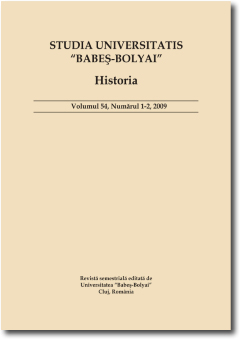TRANSYLVANIAN ROMANIANS AND TRANSYLVANIA’S PROVINCIAL IDENTITY IN THE 19TH CENTURY
TRANSYLVANIAN ROMANIANS AND TRANSYLVANIA’S PROVINCIAL IDENTITY IN THE 19TH CENTURY
Author(s): Sorin MituSubject(s): History
Published by: Studia Universitatis Babes-Bolyai
Keywords: national identity; ethnicity; local identity; Transylvania; Modern Epoch.
Summary/Abstract: Transylvanian Romanians and Transylvania’s provincial identity in the 19th century. For the Transylvanian Romanian intellectuals, the problem of concretising a national political project opened up a very large set of options. From a motherland for several nationalities, the Transylvania they imagined would become, above all, a motherland for Romanians. Once this was established, the nationalist project of ensuring a congruency between state and nation could follow its course, which was interrupted only by the competing identity projects that edified, in a similar manner, a Hungarian Transylvania. This type of representation, according to which Transylvania’s provincial identity was defined by its overwhelmingly Romanian ethnic composition, would remain a constant in the Romanian identity discourse during the following two centuries.
Journal: Studia Universitatis Babes-Bolyai - Historia
- Issue Year: 57/2012
- Issue No: Special
- Page Range: 57-66
- Page Count: 10
- Language: English

